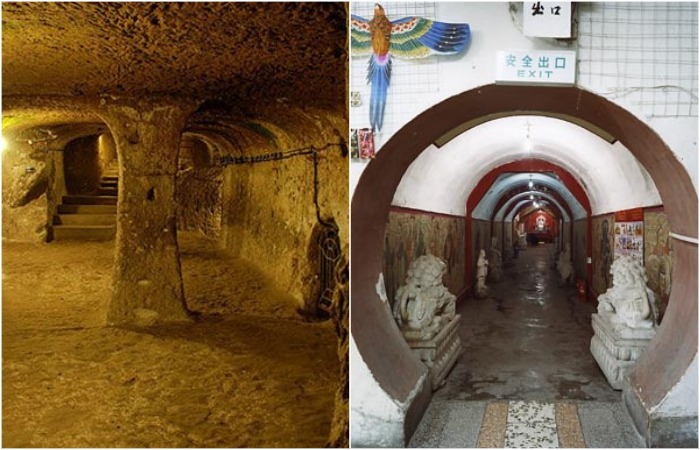Cave cities, bunkers and other underground spaces where people lived and worked


Humans are accustomed to living in places located on the Earth’s surface. But human ingenuity didn’t end there—people also learned to build homes and work spaces underground. As a result, in various corners of the planet, you can now visit a multitude of hidden spaces where people once lived and worked, and which have now become popular tourist attractions.
1. Longmen Caves (China)

Henan Province in China boasts its own UNESCO World Heritage Site, the Longmen Grottoes. Essentially, this is a rock-cut cave system that was used by Buddhists as a space for as many as 43 temples as far back as 1,500 years ago. Today, these rock-cut spaces, dotted with hundreds of religious statues and sculptures, are a popular tourist attraction.
2. Bonifacio Military Tunnel (Philippines)

Some of the most well-known and widespread types of underground structures known today are bunkers and military tunnels. The Philippines also has one—called Bonifacio, located on the island of Corregidor. It was built in the early 19th century, but was actively used during World War II: as part of the military base’s infrastructure, it served as a warehouse, a troop quarters, and a hospital. Postwar, it even housed a library and museum for Filipino military personnel. Now, after a long period of closure, it has been mothballed and converted into a museum complex.
3. Underground city of Naour (France)

The French underground city of Naours has a long and fascinating history, with its first spaces appearing as early as the early Middle Ages. Over the centuries, locals in northern France gradually expanded and fortified it. During turbulent times, Naours was used as a refuge in case wars approached the area: according to the editors of novate.ru, up to 3,000 people could hide there for extended periods, along with their belongings, food supplies, and even livestock. A large church and even sophisticated ventilation for fireplaces were installed within the underground city, preventing smoke from attracting enemies from the outside.
4. Underground City of Beijing (China)

The Beijing Underground City, also known as the Beijing Underground City System, was built relatively recently—during the Cold War, when dozens of countries were building bunkers to protect against nuclear attacks on enemy states. But the Chinese, who seemingly built everything on a grand scale, even built this bomb shelter, which stretched over 85 square kilometers. It was never used for its intended purpose, and some of its tunnels remain inaccessible to the public. However, closer to the surface, some branches were converted into cheap rental rooms back in the 1980s, while other parts of the bunker have become full-fledged Cold War museums.
5. RESO (Canada)

Montreal’s RESO has another name: La Ville Souterraine, which translates as “underground city.” And, unlike others, it’s still actively used. Essentially, RESO is a vast underground network of paths that connects various parts of central Montreal—from shopping malls and hotels to metro stations and office buildings. For locals, La Ville Souterraine offers a convenient and comfortable way to navigate the city during the coldest months of the year, and for tourists, it’s a great tourist attraction and a place for a fascinating walk.
6. Moose Jaw (Canada)

Another interesting underground site from Canada, but with a very different history. Moose Jaw is actually the name of a town in Saskatchewan, but it’s home to a large network of tunnels that was once actively used. The most intriguing period of Moose Jaw’s tunnel exploitation occurred in the 1920s: according to novate.ru, at the time, it served as one of the largest arteries for smuggling alcohol between the US and Canada, as it was the era of Prohibition.





